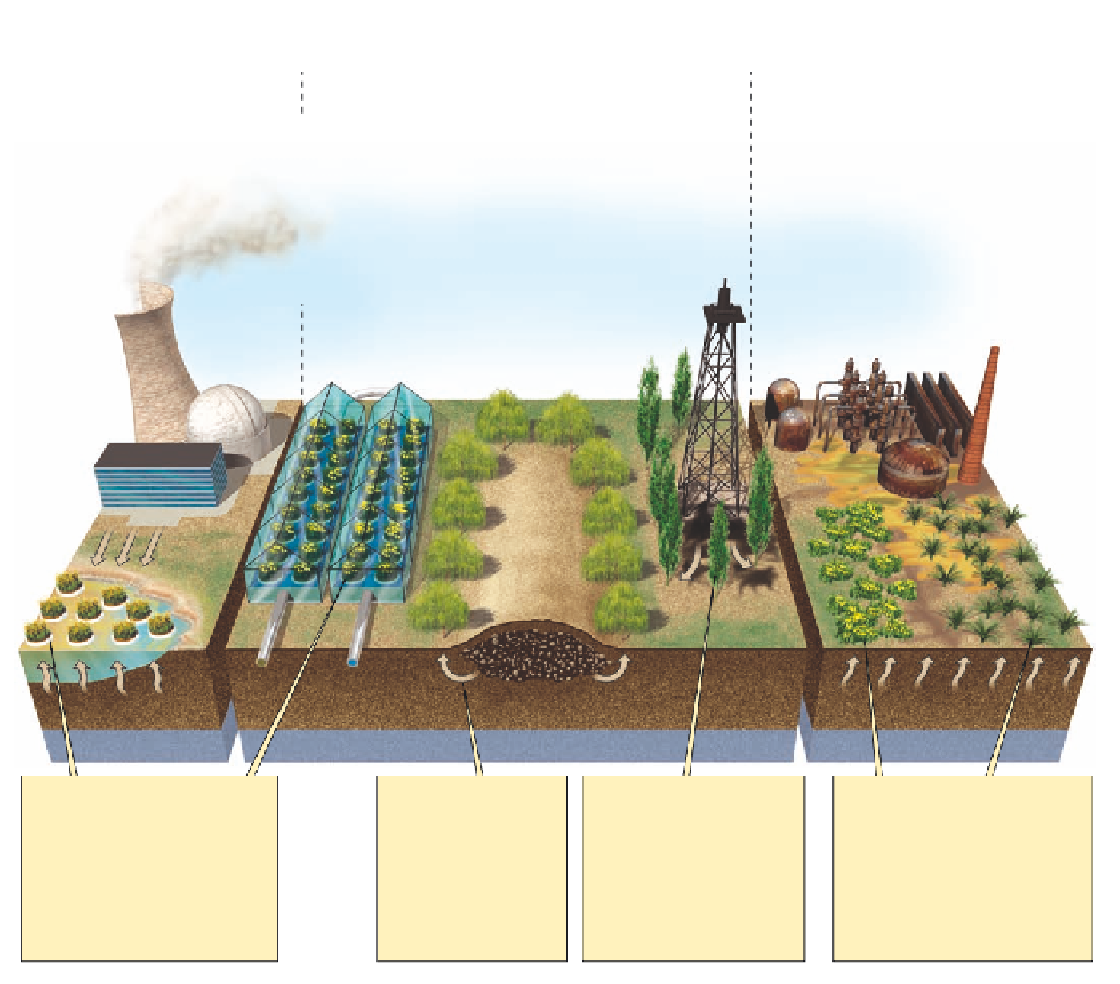Environmental Engineering Reference
In-Depth Information
Radioactive
contaminants
Organic
contaminants
Inorganic
metal contaminants
Poplar tree
Brake fern
Sunflower
Willow tree
Indian mustard
Landfill
Landfill
Oil
spill
Oil
spill
Polluted
groundwater
in
Decontaminated
water out
Polluted
leachate
Soil
Soil
Groundwater
Groundwater
Rhizofiltration
Phytostabilization
Phytodegradation
Phytoextraction
Roots of plants such as
sunflowers with dangling roots
on ponds or in greenhouses
can absorb pollutants such as
radioactive strontium-90 and
cesium-137 and various
organic chemicals.
Plants such as willow
trees and poplars
can absorb
chemicals and keep
them from reaching
groundwater or
nearby surface water.
Plants such as poplars
can absorb toxic organic
chemicals and break
them down into less
harmful compounds
which they store or
release slowly into the air.
Roots of plants such as Indian
mustard and brake ferns can
absorb toxic metals such as
lead, arsenic, and others and
store them in their leaves.
Plants can then be recycled or
harvested and incinerated.
Figure 17-15
Solutions:
phytoremediation.
Various types of plants can be used as pollution sponges to
clean up soil and water and radioactive substances (left), organic compounds (center), and toxic metals
(right). (Data from American Society of Plant Physiologists, U.S. Environmental Protection Agency, and
Edenspace)
x
up some types of toxic and hazardous waste. In
biore-
mediation,
for example, bacteria and enzymes help de-
stroy toxic or hazardous substances or convert them to
harmless compounds. See the Guest Essay by John
Pichtel on this topic on the website for this chapter.
Phytoremediation
involves using natural or ge-
netically engineered plants to absorb, filter, and re-
move contaminants from polluted soil and water, as
shown in Figure 17-15. Various plants have been iden-
tified as “pollution sponges” to help clean up soil and
water contaminated with chemicals such as pesticides,
organic solvents, radioactive metals, and toxic metals
such as lead, mercury, and arsenic. Figure 17-16 lists
advantages and disadvantages of phytoremediation.
H
OW
W
OULD
Y
OU
V
OTE
?
Do the advantages of phyto-
remediation outweigh the disadvantages? Cast your vote on-
line at http://biology.brookscole.com/miller11.
Science: Burning and Burying Solid Waste
Hazardous waste can be incinerated or disposed
of on or underneath the earth's surface, but this
practice can pollute the air and water.
Hazardous waste can be incinerated. Burning such
wastes has the same mixture of advantages and dis-
advantages as burning solid wastes (Figure 17-10).
Unfortunately, incinerating hazardous waste releases
















